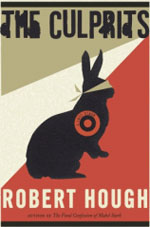
John Lavery’s Sandra Beck is entrancing, at times infuriating and ultimately unforgettable. This applies to both the mercurial, enigmatic titular character and the book of which she is the beating heart, the central obsession and the puzzling, then gaping, then heart wrenching absence.
What we do know fairly factually about Sandra Beck is that she is ravishingly beautiful, musically gifted, an indefatigable administrator for the Montreal Symphony and equally tireless about perambulating through the world on fiercely wielded crutches as the result of losing a foot to bone cancer. The impressionistic portrait of the spirit of Sandra Beck is painted by the two people who love her most, and perhaps know her least: her jittery, intense, word-besotted teenaged daughter Josee, and her passionately devoted but bewildered husband, Montreal police chief and television personality Paul-Francois (PF) Bastarache, who has known and been fascinated by Sandra since they were teenagers. Josee’s and PF’s collective composition of Sandra Beck is both compelling and contradictory. Josee sees Sandra as her consummate and ultimate “happiness”, but one that radiates only cold and is often simply not there. Josee’s obsession with her mother overshadows everything, so much so that the girl’s troubling sexual initiation seems like a peculiar afterthought, something with medical consequences that she simply must recover from so that she can continue to strive to please her mother. Misunderstandings between francophone and anglophone culture, obdurate silences between Catholic and Protestant faiths, and odd miscommunication and misreading between French and English (the misapprehended phrase “Visit Bill” stands out vividly) all seem to be precursors of the more profound disconnection between Sandra Beck and her husband PF. While PF struggles to understand Sandra and give her personal and psychic space, while still feeling consumed by her powerful presence and wanting to support her, particularly during her recovery from the surgery to remove her foot, he despairs: “Sometimes I wonder if I’m listening in the same language she’s talking in.” The first quarter of the book, told from Josee’s point of view, is uneven, somewhat queasy and seemingly a little too captivated with its own wordplay, although that could be as much an accurate depiction of a bright, troubled teenager as it is lack of discipline on Lavery’s part. It’s worth pointing out, however, as that may be the point in the book where some readers might give up on the book. However, Sandra Beck swiftly gains momentum and gathers emotional resonance as soon as PF’s voice takes over. PF traces tenderly the milestones of the life of the woman he has known “off and on” (an odd but increasingly poignant phrase) throughout his life. He starts to mingle those memories with equally striking reminiscences about his career in law enforcement. PF is haunted by the victims of and suspects in crimes he has assisted in investigating, and that becomes entwined with an almost overpowering sense of Sandra Beck’s presence in an empty car seat as PF drives and unspools stories and memories in an extended scene. PF’s revelatory memory of the real-life École Polytechnique massacre is devastating, and then that shock builds to a stunning, emotionally lacerating crescendo – yes, the perfect musical metaphor to link to the mysterious and beloved Sandra Beck. Although it is juxtaposed with thoughts and memories of his wife, PF’s contemplations about his life in law enforcement unto themselves vividly capture the impact of violent crime on those who examine crime scenes and help seek justice for victims. In contrast to the numbing litany and inventory of death in Roberto Bolano’s 2666, which has its own kind of power in sheer numbers but is grindingly inhuman, PF’s insights are shockingly intimate, but humanizing in that very unsettling intimacy. As he observes: “Having spent the day tramping through the swamp of the vilest human conduct imaginable, he was in an over-extended state of brittle nervousness which neither gentility nor prayer had managed to appease.” What Sandra Beck the book seems to conclude is that neither love nor desire nor compassion, nor even acute powers of vigilance and observation, are ever going to give you the complete picture of another person, or solve the mystery that is another human being. However, this strangely bewitching book manages to couch that in a way that is not pessimistic. Although we have not learned as much as we would like to about Sandra Beck, we have learned a great deal about passionate, unconditional love that does not need to know all to love all.Thank you to House of Anansi Press for providing a review copy of Sandra Beck, by John Lavery.




